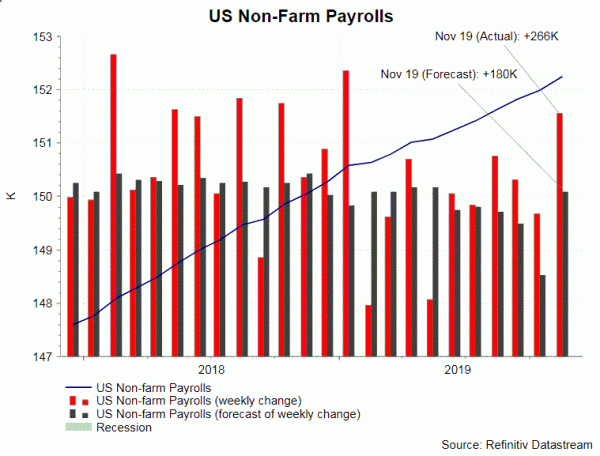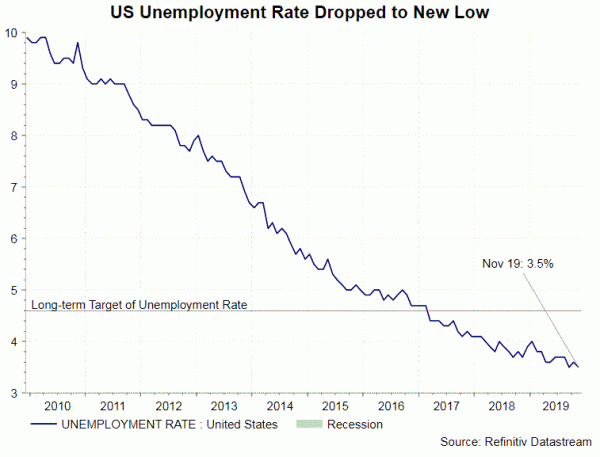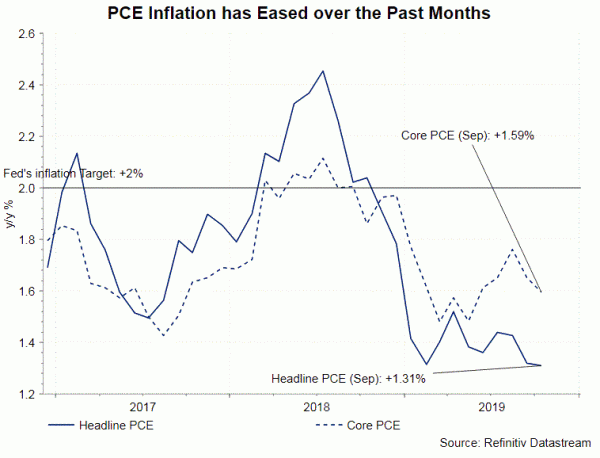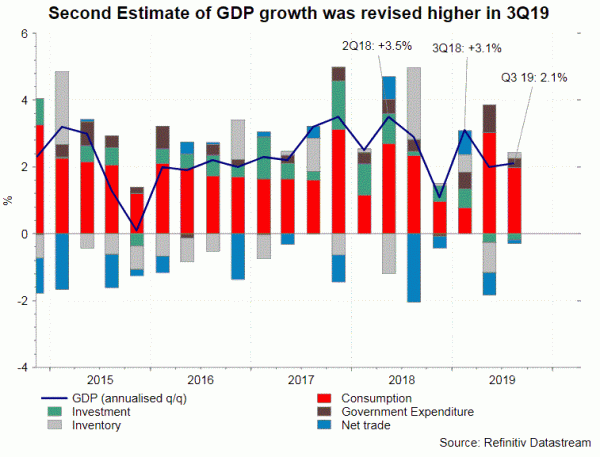We expect the FOMC will leave the Fed funds rate unchanged at 1.5-1.75% in December. The employment report released last week confirmed a resilient job market. Other indicators showed little deviation from the trend observed in October. Indeed, unless global and domestic conditions deteriorate materially, it is likely that the monetary policy will remain unchanged in 2020. Besides monetary policy decisions, the Fed will also release the updated median dot plot and staff economic projections at the meeting.
Non-farm payrolls increased +266K in November, beating consensus of +180K addition and the +128K gain in the prior month. Private positions rose +254K while government jobs added +12K. Although some of the gains were driven by the return of GM workers are the strike, what is promising is the upward revision of October’s payrolls addition, to +156K, from previous estimate of +128K. The unemployment rate slipped -0.1 percentage point to 3.5%. Meanwhile, average earnings expanded +3.1%, compared with the upwardly revised +3.2% growth in October.
 On inflation, headline CPI edged higher, by +0.1 percentage point, to +1.8% y/y in October. The core reading, however, slipped -0.1 percentage point to +2.3% y/y during the month. PCE, Fed’s preferred inflation gauge, eased to +1.6% in October from +1.7% in the prior month. Although headline readings stayed below the +2% target, underlying inflation remained firm. Separately, second estimate of 3Q19 GDP growth was revised higher to an annualized +2.1% q/q, form +1.9%. The set of data, characterized by stable growth, strong employment and modestly soft inflation should offer much room for the central bank to keep the powder dry.
On inflation, headline CPI edged higher, by +0.1 percentage point, to +1.8% y/y in October. The core reading, however, slipped -0.1 percentage point to +2.3% y/y during the month. PCE, Fed’s preferred inflation gauge, eased to +1.6% in October from +1.7% in the prior month. Although headline readings stayed below the +2% target, underlying inflation remained firm. Separately, second estimate of 3Q19 GDP growth was revised higher to an annualized +2.1% q/q, form +1.9%. The set of data, characterized by stable growth, strong employment and modestly soft inflation should offer much room for the central bank to keep the powder dry.














